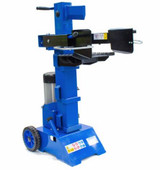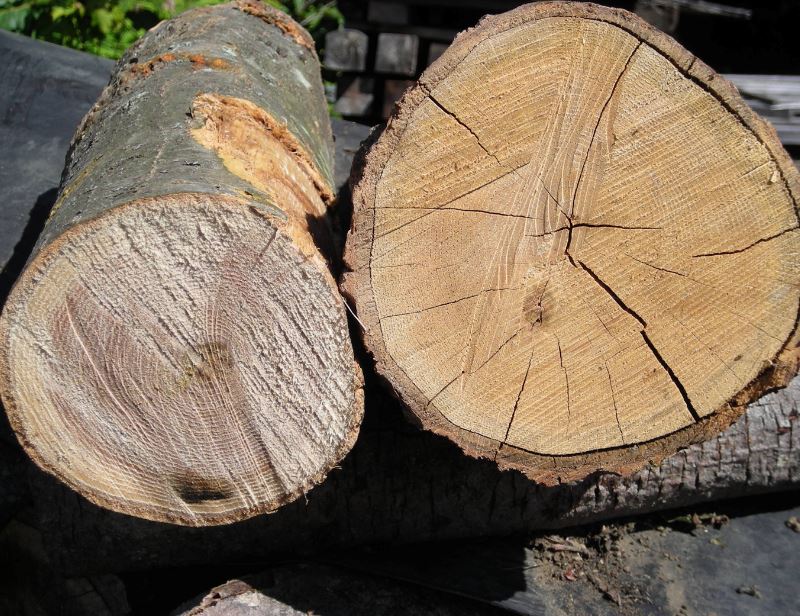Horizontal vs Vertical Log Splitters

Choosing a log splitter that is suitable for your needs will save you time and money. So, we've complied a simple guide to explain the differences and to help you make an informed choice.
Horizontal Log Splitter
If you are splitting logs for a log burner or fire, then a horizontal splitter is probably the better option for domestic use.

The wood splitter can be placed on a workbench, table or a purpose-built stand and you lay the wood horizontally on the splitter.
Log splitters are measured in tonnage and a 4 ton horizontal log splitter would be capable of splitting logs up to 6” in diameter and doing most domestic work depending on the type of wood you’re trying to split.
Harder woods such as oak, walnut or poplar will require a higher tonnage splitter.
A hydraulic ram will push the log against a stationary wedge to split the wood into 2 pieces, making it more manageable for fires or log burners.
If you require smaller pieces of wood, many horizontal hydraulic log splitters will also come with an option for a 4-way splitting wedge which will split the log into 4 pieces.
The majority of horizontal wood splitters will be electric. This means you can use one indoors in a workshop or garage without the fear of any carbon monoxide poisoning (and keeping you out of the cold and rain).
Vertical Log Splitter
If you’ve got larger logs to split or a lot of grounds maintenance to complete, then a vertical wood splitter would be of more use.
The main difference is that you don’t need to lift the logs up to the splitter - you can simply roll them into place.

The splitting wedge is built into the hydraulic ram and moves vertically down through the log to split the log, which will be held in place by 2 adjustable arms.
The bottom plate will also be adjustable so if you’ve smaller cords of wood to split, you can adjust the height accordingly.
Vertical log splitters will have a higher tonnage so are capable of splitting hard or green wood of much larger diameters than a horizontal wood splitter.
A 7 tonne vertical splitter will easily cope with logs of 12” diameter.
Again choosing an electric motor means the splitter can be used in a workshop or garage.
Hard or Green Wood
A big consideration with log splitters is going to be the type of wood you want to cut.

Hardwood or knotty wood will require more force to split so a higher tonnage may be required.
Green wood is freshly cut or fallen wood and will retain a lot of moisture. This makes it more difficult to split and splitter tonnage will again be a consideration.
Seasoned wood is wood that is slightly more aged and a lot of the moisture will have evaporated. This makes the wood more brittle and much easier to split.
Electric Motors
The modern electric motors used in log splitters are more than capable of the task and are much quieter making them suitable for use in residential or low-noise areas. They will also be very low maintenance.
The electric motor produces no carbon monoxide, meaning electric log splitters can be used in shed, garages and workshops without the fear of carbon monoxide poisoning.
If you’re looking for a log splitter then contact us to discuss your needs.

